#Lenox Avenue
Text
CABLES TO RAGE OR I'VE BEEN TALKING ON THIS STREET CORNER A HELL OF A LONG TIME // Audre Lorde
This is how I came to be loved
by loving myself
loveless.
One day I slipped in a snowy gutter of Brighton Beach
and booted feet passing
me by on the curb squished my laundry ticket
into the slush I thought fuck it now
I'll never get my clean sheet and I cried bitter tears
into the snow under my cheek in that gutter in Brighton Beach
Brooklyn where I was living because it was cheap
In a furnished room with cooking privileges
and an old thrown-away mama who lived down the hall
yente who sat all day long in our common kitchen
weeping because her children made her live with a schwartze
and while she wept she drank up all my cream soda
every day before I came home.
Then she sat and watched me watching my chicken feet stewing
on Fridays when I got paid
and she taught me to boil old corn in the husk
to make it taste green and fresh.
There were not many pleasures in that winter
and I loved cream soda
there were not many people in that winter
and I came to hate that old woman.
That winter I got fat on stale corn on the cob
and chicken foot stew and the day before Christmas
no presents to wrap
I poured two ounces of Nux Vomica into a bottle of cream soda
and listened to that old lady puke all night long.
When spring came I crossed the river again
moving up in the world six and a half stories
and one day on the corner of Eighth street
across from Wanamakers
which had burned down while I was away in Brooklyn—
where I caught the bus to work
a bus driver slowed down at the bus stop one morning—
I was late it was raining my jacket was soaked—
then speeded past without stopping when he saw my face.
I have been given other doses of truth—
that particular form of annihilation—
shot through by the cold eye of the way things are baby
and left for dead on a hundred streets of this city
but oh that captain marvel glance
brushing up against my skull like a steel bar
in passing
and my heart withered sheets in the gutter
passing passing
booted feet and bus drivers
old yentes in Brighton Beach kitchens
SHIT! said the king and the whole court strained
passing me
out as an ill-tempered wind
lashing around the corner
of 125th Street and Lenox.
(1969)
1 note
·
View note
Text

W 115th Street and Lenox Avenue, Harlem, Manhattan, 1970s
Photo Jack Garofalo
12 notes
·
View notes
Text
The Brilliance of Arthur Blythe's "Lenox Avenue Breakdown"
Introduction:
Arthur Blythe’s “Lenox Avenue Breakdown” is a seminal album in the world of jazz, showcasing the brilliance of Blythe and his ensemble. Recorded in 1978 at Mediasound in New York City and released by Columbia Records in April 1979, this album stands as a testament to Blythe’s innovative approach to composition and improvisation.
The Album’s Reception and Impact:
The album…

View On WordPress
#Arthur Blythe#Bob Stewart#Cecil McBee#Classic Albums#Jack DeJohnette#James Blood Ulmer#James Newton#Jazz History#Lenox Avenue Breakdown
2 notes
·
View notes
Text
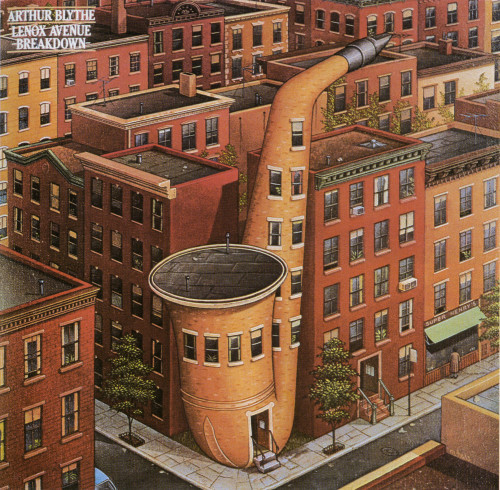
Arthur Blythe – Lenox Avenue Breakdown (1979)
143 notes
·
View notes
Text
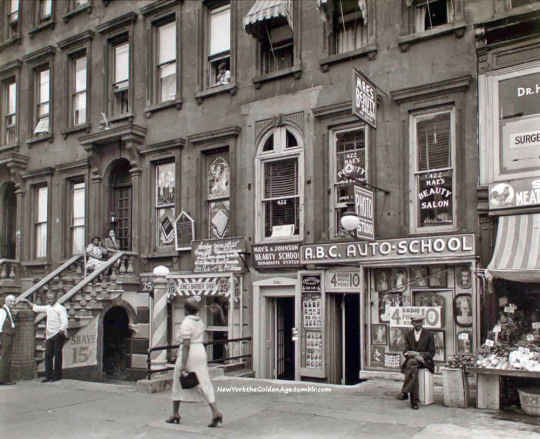
Lenox Avenue, 1930s.
Photo: Berenice Abbott via the Guardian
#vintage New York#1930s#Berenice Abbott#vintage Harlem#Lenox Ave.#street scene#street photography#street life#vintage NYC
170 notes
·
View notes
Photo
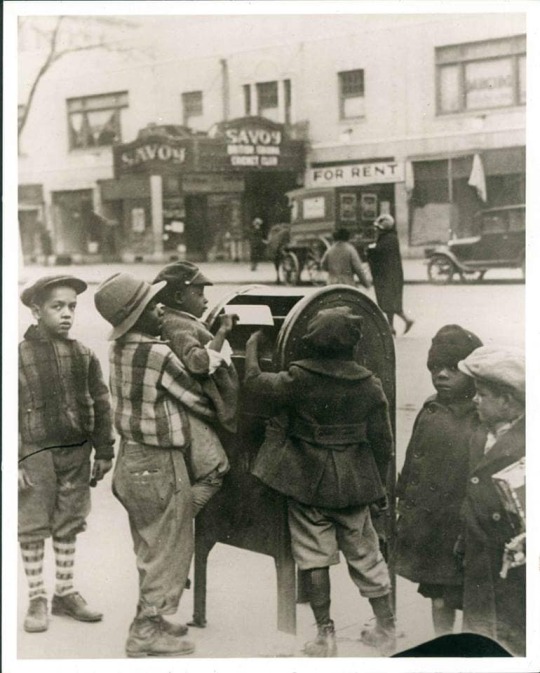
1920′s Children on Lenox Avenue, New York City. From Vintage America Uncovered, FB.
215 notes
·
View notes
Text


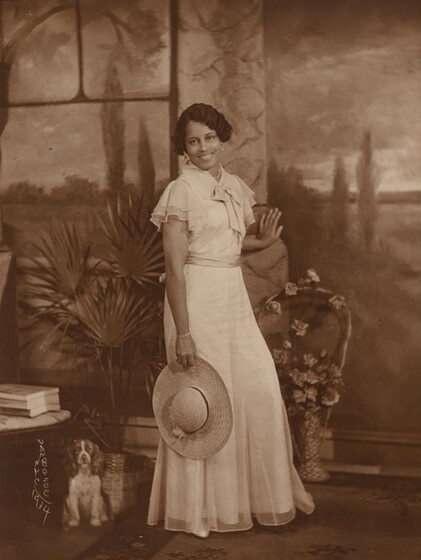




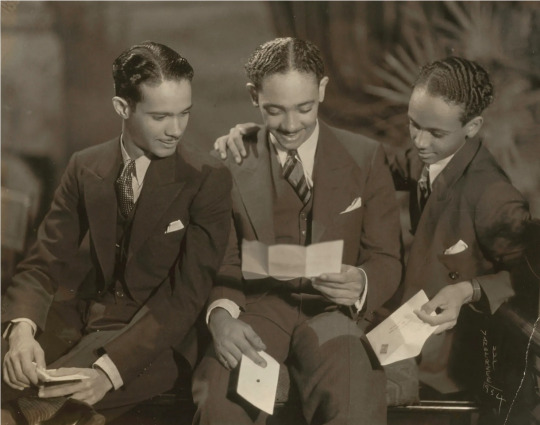
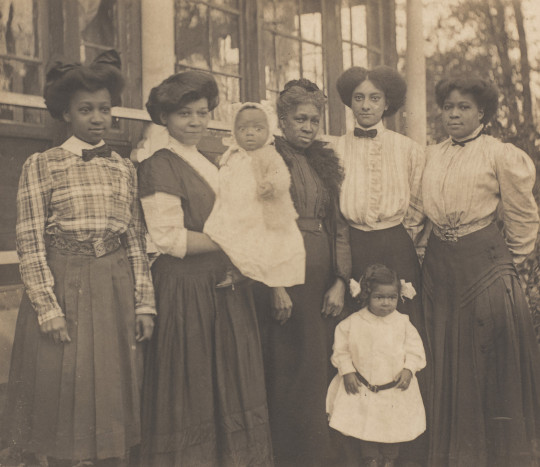
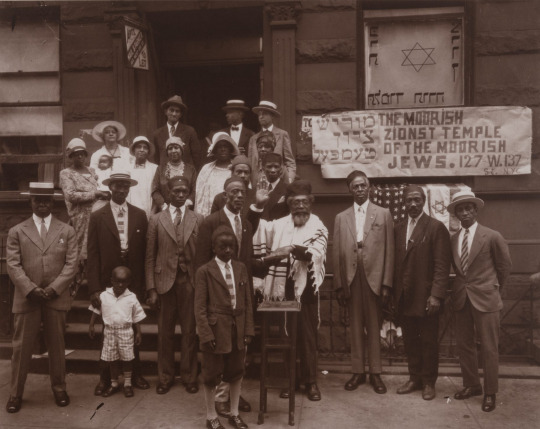
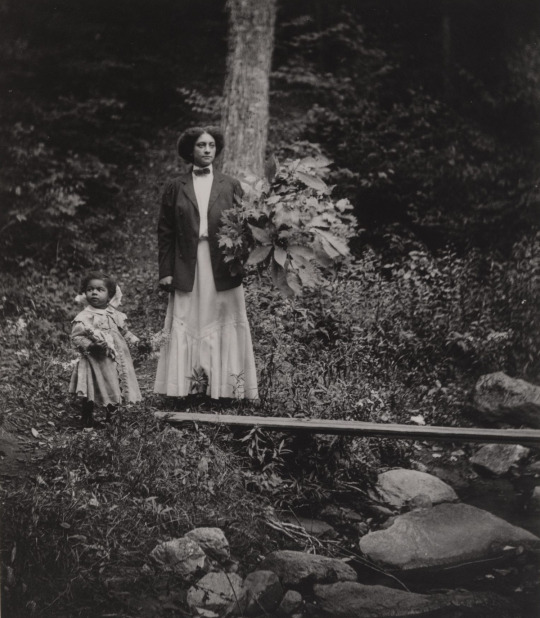
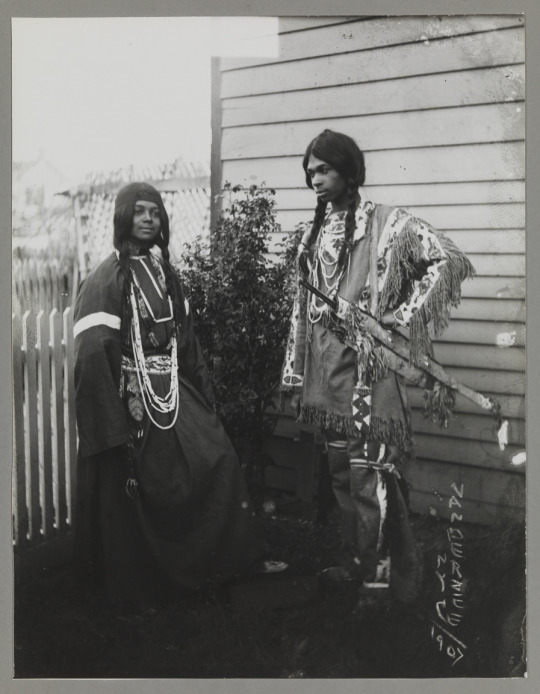

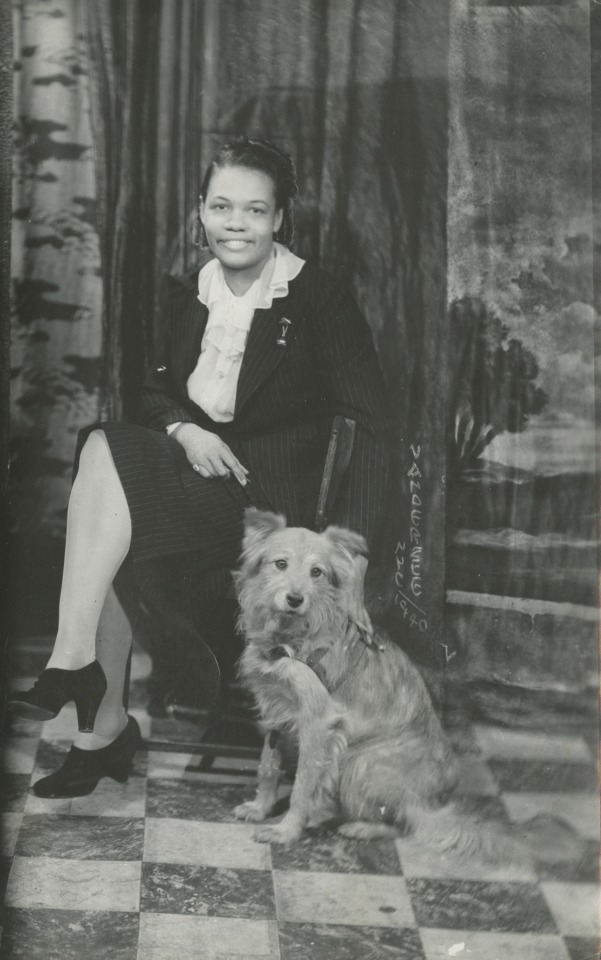
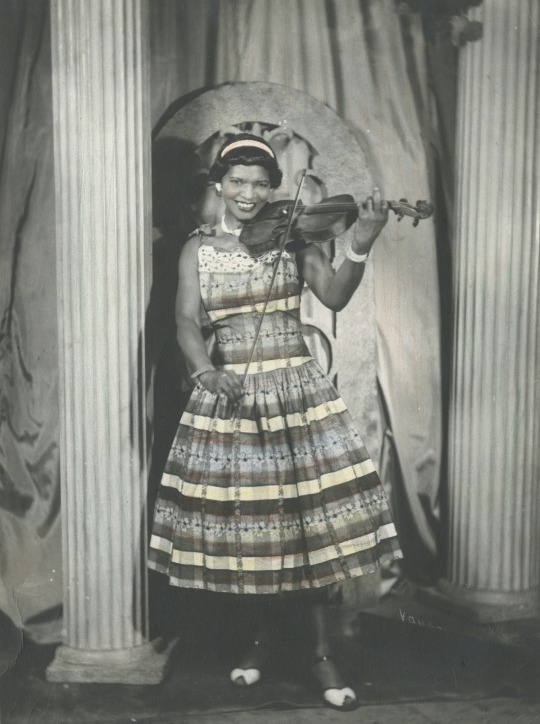

Black photographer James Van Der Zee established himself in Harlem, New York where he opened a portrait studio, intermittently from 1916 until 1968. His decades of documentation reveal the intimate lives of Black New York during some of its most significant cultural moments, including the Harlem Renaissance. During the 1920s, Van Der Zee work drew Black couples and families to his studio, showing the diverse experiences of of the rising Black middle (or upper working) class. He photographed Harlem residents in their homes, churches, and social clubs, providing an intimate look into the lives and labor one of America's most well-know, historic Black communities.
He lived to be almost 100, a Black man born into freedom, grew up during the collapse of Reconstruction, and lived to see the Civil Rights Act passed . . .
It’s a hard job to get the camera to see it like you see it. Sometimes you have it just the way you want it, and then you look in the camera and you don’t have the balance. The main thing is to get the camera to see it the way you see it. ~ Van Der Zee
(1) Beau of the ball (1926)
(2) Alpha Phi Alpha Basketball Team (1926)
(3) Lady with Wide-Brimmed Straw Hat w/ Dog (1934)
(4) A woman poses in Van Der Zee's studio (1920)
(5) A smiling couple (1930)
(6) Members of the Benevolent and Protective Order of Elks parade in Harlem (1931)
(7) Another Parade in Harlem (1924-26)
(8) Three men sit together reading through letters (1934)
(9) Women and children pose on Lenox Avenue (1909)
(10) The Black Jewish community of Harlem (1929)
(11) Kate and Rachel Van Der Zee explore the wilderness of Lennox, Massachusetts (1907)
(12) A Native American (possibly afroindigenous) Couple (1907)
(13) Nude with Butterfly (1936)
(14) A woman smiles her best friend (1940s)
(15) A violinist (1956)
(16) Jean-Michel Basquiat (1982)
Source: National Gallery of Art | Pennsylvania Academy of the Fine Arts
68 notes
·
View notes
Text
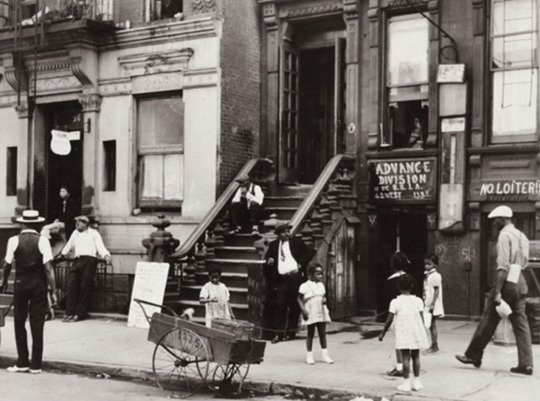
Sid Grossman 133rd Street Between Lenox and Fifth Avenues, Harlem, New York c.1938
29 notes
·
View notes
Photo

This elegant 1907 Upper East Side New York City co-op has hand-painted murals and classic pre-war details. It has 1bd 2ba & priced at $1.6M, but monthly maintenance is a whopping $6,262. (Excuse me?)

Elegant hallway.

Enter through a large gallery framed by nine-and-a-half-foot ceilings and custom tile floors.
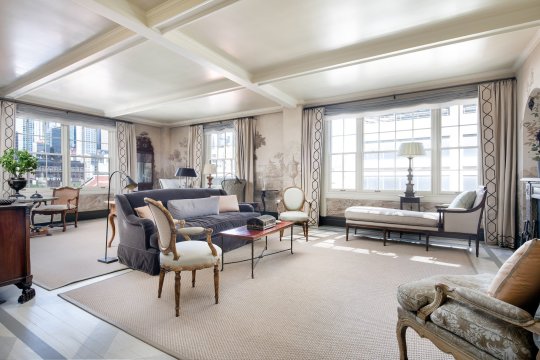

Murals on the Pre-War architecture are hand-painted.

A large, sunny corner living room with a wood-burning fireplace, oversized windows, and beamed ceilings. Off the living room is a library that can be used as a dining room or a second bedroom.

A windowed eat-in kitchen is classic and elegant with plenty of cabinets and counter space.


The master bedroom suite includes a master bath and a dressing room.

A second full bath is just down the hall.

https://www.cityrealty.com/nyc/lenox-hill/901-lexington-avenue/apartment-8S/erwUDDPD
78 notes
·
View notes
Text

Catherine Latimer: The New York Public Library's First Black Librarian
On a beautiful September morning in 1921, the young poet, Langston Hughes, exited the subway at 135th Street and Lenox Avenue in Harlem. In 1921 Harlem was fast becoming a burgeoning mecca for black artists, writers, and performers. After making a few stops, Langston found his way to the Harlem Branch Library where, as he described, a “warm and wonderful librarian, Miss Ernestine Rose, white, made newcomers feel welcome, as did her assistant in charge of the Schomburg Collection*, Catherine Latimer, a luscious cafe au lait.” Although, only in the position one year when Langston Hughes made his observations, Catherine Latimer would go on to play a significant role in the history of the Schomburg Center for Research in Black Culture and The New York Public Library as, among other things, NYPL’s first African American librarian.
#Black History Month#libraries#librarians#Catherine Latimer#Schomburg Center for Research in Black Culture#NYPL
69 notes
·
View notes
Photo
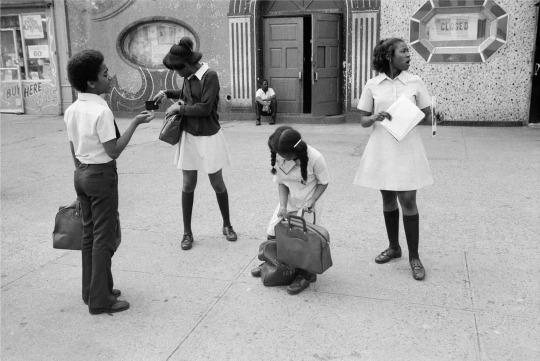
Four Children at Lenox Avenue, Harlem, NY, Dawoud Bey, 1977
#photography#vintage#vintage photography#harlem#new york#new york city#black and white photography#street photography#1970s#20th century#american#african american#black artists#artists of color
137 notes
·
View notes
Text
The rhythm of life
Is a jazz rhythm,
Honey.
The gods are laughing at us.
–Langston Hughes, from "Lenox Avenue: Midnight"
3 notes
·
View notes
Text
Esther Brown did not write a political tract on the refusal to be governed, or draft a plan for mutual aid or outline a memoir of her sexual adventures. A manifesto of the wayward—Own Nothing. Refuse the Given. Live on What You Need and No More. Get Ready to Be Free—was not found among the items in her case file. She didn’t pen any song lines: My mama says I’m reckless, My daddy says I’m wild, I ain’t good looking, but I’m somebody’s angel child. She didn’t commit to paper her ruminations on freedom: With human nature caged in a narrow space, whipped daily into submission, how can we speak of potentialities?
The cardboard placards for the tumult and upheaval she incited might have said: “Don’t mess with me. I am not afraid to smash things up.” But hers was a struggle without formal declarations of policy, slogan, or credo. It required no party platform or ten-point program. Walking through the streets of New York, she and Emma Goldman crossed paths but failed to recognize each other. When Hubert Harrison encountered her in the lobby of the Renaissance Casino after he delivered his lecture on “Marriage Versus Free Love” for the Socialist Club, he noticed only that she had a pretty face and a big ass.
Esther never pulled a soapbox onto the corner of 135th Street and Lenox Avenue to make a speech about autonomy, the global reach of the color line, involuntary servitude, free motherhood, or the promise of a future world, but she well understood that the desire to move as she wanted was nothing short of treason. She knew first-hand that the offense most punished by the state was trying to live free. To wander through the streets of Harlem, to want better than what she had, and to be propelled by her whims and desires was to be ungovernable. Her way of living was nothing short of anarchy.
—Saidiya Hartman, The Anarchy of Coloured Girls Assembled in a Riotous Manner, in Wayward Lives, Beautiful Experiments.
22 notes
·
View notes
Text

Parents and children outside P.S. 89, 135th Street and Lenox Avenue, ca. 1927.
Photo: Bettmann Archive/Getty Images/Fine Art America
#vintage New York#1920s#vintage Harlem#135th St.#school#elementary school#parents & children#schoolchildren#vintage NYC
76 notes
·
View notes
Text


Hannah Elias was one of the richest African women who ever lived, but because she was a sex worker who ultimately became the largest Black landlord in New York, she is largely unknown to Us...
Hannah Elias was born in Philadelphia, Pennsylvania, sometimes during 1865 at 1820 Addison Street, one of nine children. Her father Charles Elias was a "negro with Indian blood in him" who ran a large, well-regarded catering operation, her mother Mary Elias was "almost white", and they sent her to public school. In 1884, to attend her sister Hattie's wedding in style, Hannah borrowed a ball gown without permission from her employer, leading to a sentence at Moyamensing Prison and her banishment from home.
On her own
Supporting herself as a sex worker at a "resort" owned by Emelyn Truitt in Manhattan's Tenderloin neighborhood, she met wealthy glass-factory owner John R. Platt, forty-five years her senior. She left the brothel when her twin brother David and suitor Frank P. Satterfield asked her to live with the latter in a boardinghouse in east Philadelphia. She became pregnant and gave birth at the Blockley Almshouse in December 1885, giving the child up for adoption.
Affair with John R. Platt
After Elias reunited with Platt, he gave her large sums of money, "volunteerd [sic] to start her in the boarding-house business", at 128 W 53rd Street, where as proprietress she rented a room to Cornelius Williams. She then moved into a mansion at 236 Central Park West, passing as Sicilian or Cuban. Williams later fatally shot city planner Andrew H. Green in front of Green's Park Avenue home, confusing him with Platt.
Blackmail case
When Platt, prodded by his family, accused her of blackmailing him out of $685,385, the affair merited The World's lead story on 1 June 1904, describing her as his "ebony enslaver". Asked about allegations that she had been blackmailed as well, she responded "I have read in the newspapers that I have been, and I am frank to say that there must be some truth in a story which is given so much in detail." The novelty of a Black woman with the equivalent of tens of millions of dollars, living in one of the wealthiest neighborhoods in New York, caused the Seeing New York electric bus tours to make Elias's house a stop. Platt initially refused to swear a criminal complaint, but relented, allowing police serving a criminal warrant to break down her door, where they were escorted to Elias by her Japanese butler, Kato. At the time she said: "I have no fear. I have done no wrong, and every one of the poor people I have helped is praying for me in the time of my affliction." She was arraigned in Tombs Court on June 10, 1904.
Held on $30,000 bail, meetings at the house of R. C. Cooper at 318 W. 58th St. and 149 W. 43rd St. raised money for her release. When Platt was "asked directly about Hannah Elias he aimed blows at the reporter with his umbrella and shouted: 'Don't talk to me about Hannah Elias.'" The story spread, leading to detailed court coverage in the Baltimore Sun as she took the stand and described how her money was kept in "15 savings banks" as well as "houses and lands worth $150,000, furniture and plate, worth $100,000, and jewels valued at as much more." After losing his initial court case, the court of appeals eventually ruled against Platt, allowing her to keep his gifts.
Later life
In 1906, newspapers reported that Elias evicted white tenants from several apartment buildings on West 135th Street with a note reading, "in the future none but respectable colored families were to occupy the flats". She was rumored to have continued in this vein, named in a 1912 article titled "Negroes Crowding Whites" as the purchaser of a $250,000 apartment building at 546–552 Lenox Avenue; however, she refuted these claims through her lawyer, Andrew F. Murray, in 1906. By 1915 she was living in a penthouse in one of her "numerous properties" at 501 W. 113th St. She joined forces with noted Harlem developer John Nail but later left for Europe with her butler, Kato, never to return.
Her death date is unknown.
27 notes
·
View notes
